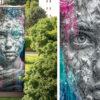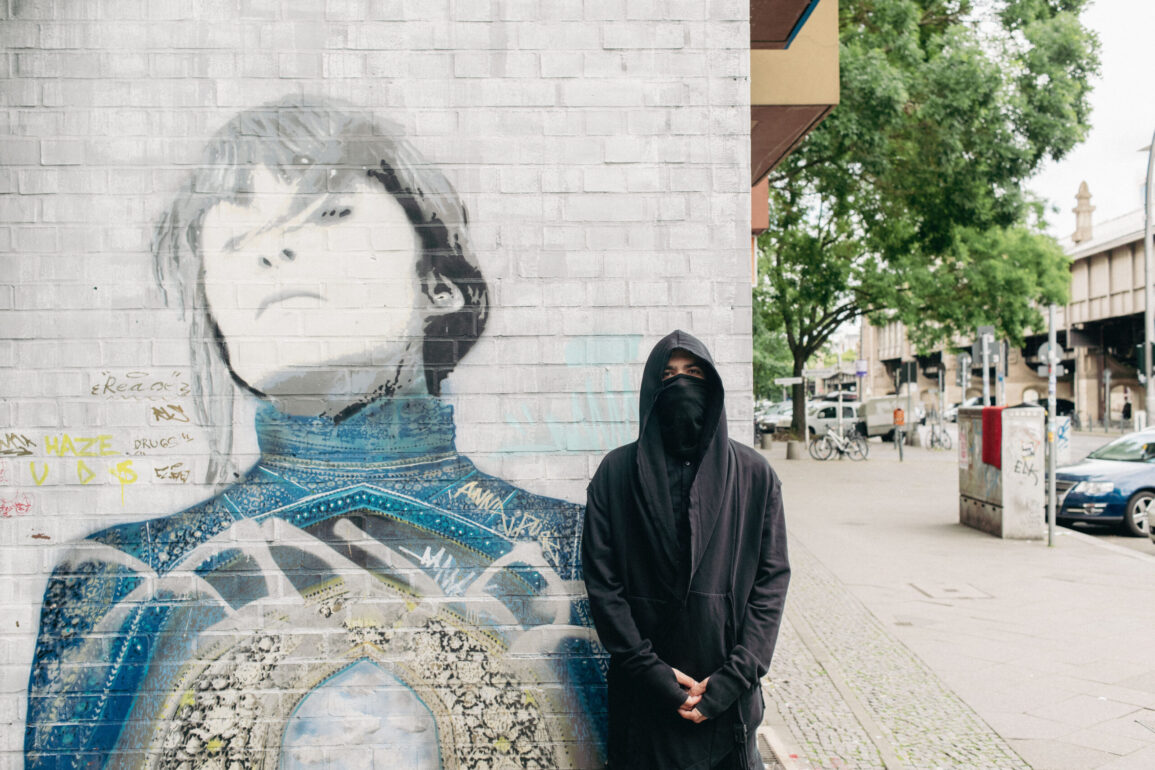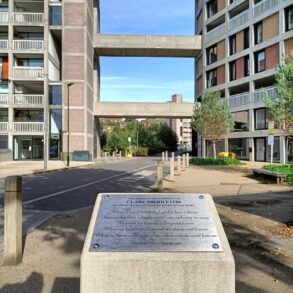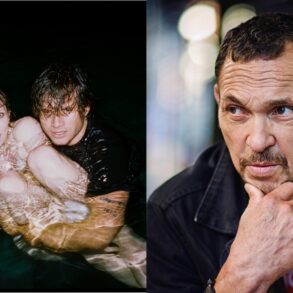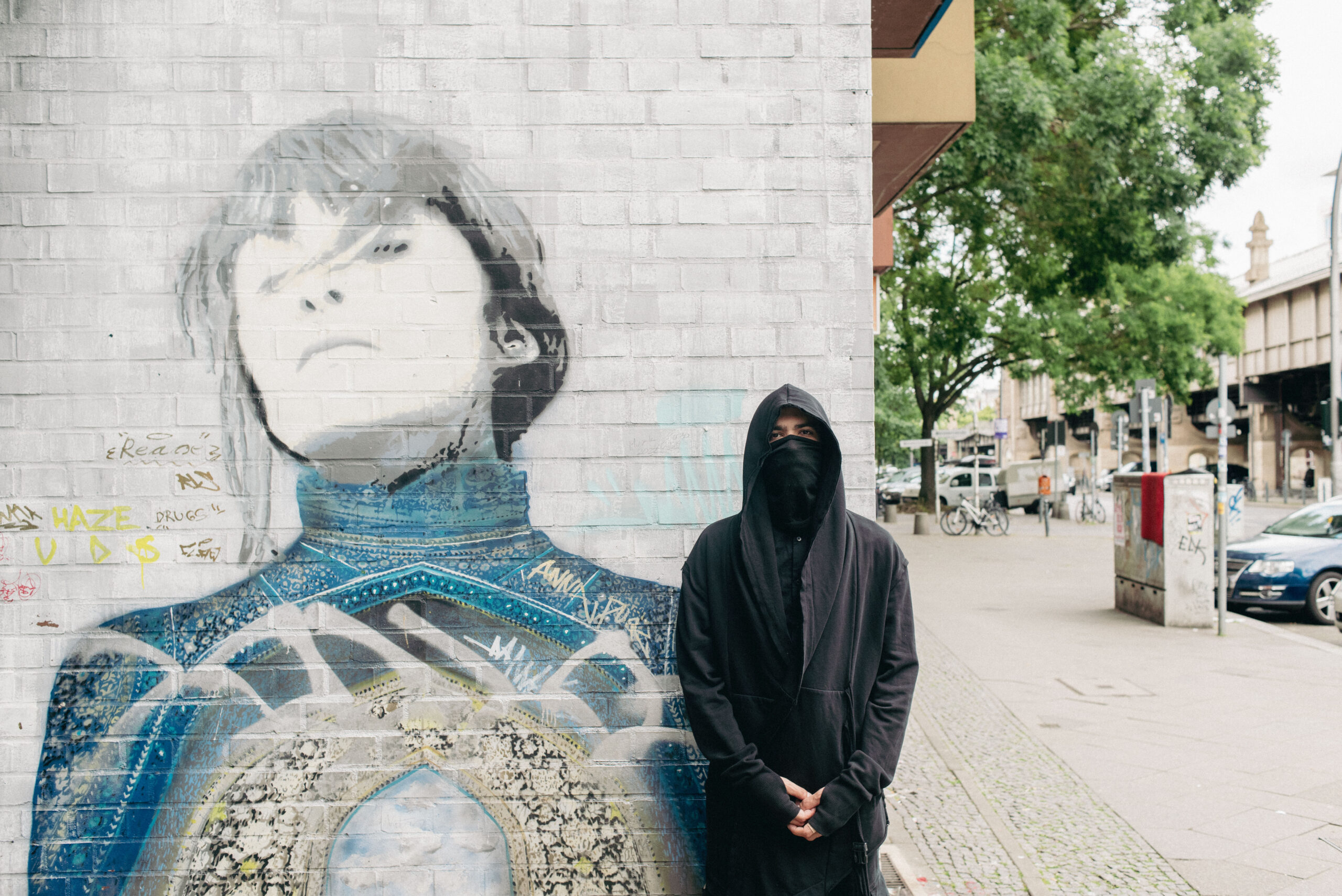
Nafir’s art looks you right in the eye. Born in Tehran, their work draws inspiration from traditional Iranian culture and takes aim at censorship and social issues, often featuring faces – and they don’t want you to look away.
After a first foray into graffiti in 2008, Nafir eventually developed an artistic style that’s heavy on stencils and spray paint, using carpets and ceramics from Persian culture to twist traditional textures to provoke thought. Their work has been popping up around the globe for over a decade, but now both Nafir and their art have found a home in Berlin. Currently, the artist is preparing for an exhibition with photographer Mischa Fanghänel opening this month at Galerie Grolman, titled ‘Never ending fight‘, for which they’re focusing on painting Berliners.
I am obsessed with textures and my goal is for my art to be living between these textures.
“[Their] artworks convey such a deep love and gratitude for the beauty of Iranian culture,” the gallery says of Nafir. “To quote the artist, ‘it is the texture that chooses the picture it will hold’.” We sat down with Nafir to see what they’ll apply his discerning touch to next.



A lot of your work is on carpets and ceramics, which are unconventional media for street art. Why is that?
The traditional part of my work goes back to my father. He was a carpet seller and an expert of patterns – [which] all belong to tribes and regions and have a 2,500 year old tradition – and I used to go to bazaars with him. I like to say Iran’s history is not written, it’s woven. I got more serious about working on ceramics and carpets and other traditional materials in 2016. I wanted to do a collaboration with my father but in 2018 he passed away, and then I stopped for a year. Later I managed to figure out how to spray [paint] on a carpet, because the material is very hard to paint on.
The name Nafir comes from a Persian poem, and the word itself means “scream”. Why did you take that name?
I’ve been angry for most of my life, and I got to the point where I realised there is something much stronger than rage that can scare everyone, and it’s just being relaxed. I learned to manage my anger and to channel it into my art and my music. I find that painting and cutting stencils is my meditation. If I didn’t have art, it would be impossible for me to deal with anger and pain. It was also the title of my last show in Thailand: ‘Art of Pain(t)’.



Lots of your work features fierce, stoic portraits of women. Who are the women in your art?
The other side of me is my mother. My parents divorced and my mother raised me alone, which wasn’t very common. She was an anarchy mom. She’s the reason I decided to focus my art on the female, the women in the Middle East and all over the world. Some of the women are just pictures, but most of them are my friends – musicians, models, singers – who are reflecting the way I am seeing my mother. Strong people!
Does work ever get stolen?
Yes, almost all of them! I used to be angry when my pieces were removed or sprayed on – this happens very often in Iran. But imagine a person who goes to spray other people’s art and then sees my carpet and decides ‘I’m gonna take it home’ – technically they are getting saved. I’m going into their houses, in their most private places. And I am really looking forward to these stories in many years of my painting coming back to me.



What’s next for you?
I am working on a piece for STRAAT [Museum] in Amsterdam, my biggest piece so far. I ordered the carpet from Iran, handmade, 350 by 480 centimetres. And I want to travel to different countries and research their cultures and their fabrics and textures and mix my art with that. I am obsessed with textures and my goal is for my art to be living between these textures, for myself to exist between textures and cultures.
How do you see the difference between putting work up for the public and exhibiting it?
I don’t call myself strictly a street artist. When I work with galleries, I don’t feel like I belong there so much. I like it, but I think art should be for everyone and not for sale and owning. But we live in the kind of capitalism where I have to sell my work and I have to do commissions and people have to buy it. I also love street art because you can talk with people directly, without the media, without the propaganda, you just put something on the wall and you make them see it.
What do you want people to take away from your art?
I want to pause people for a moment and give them space to feel and think to become a better version of themselves, and then maybe we could come out of this crazy situation we are in.
- Check out Nafir’s work on their website and follow them on Instagram. Their exhibition ‘Never ending fight’ runs from 28.09 – 10.11.24 at Galerie Grolman, details.
@artnafir
This post was originally published on this site be sure to check out more of their content.


